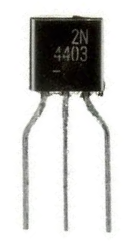What is the Largest Region of a Bipolar Junction Transistor (BJT)?

A bipolar junction transistor has 3 regions: the base, the collector, and the emitter.
This is illustrated below:

The collector is the largest region of a BJT transistor.
The reason the collector is the largest region is because it is the region which receives the majority of the current carriers, which for a npn transistor are electrons and for pnp transistors are holes. The collector receives the current carriers from the base and the emitter regions of the transistor. When a BJT transistor receives sufficient current at the base, current then travels from the emitter to the collector.
Because it receives the most current carriers, it generates more heat than all other regions.
The collector region is the largest of all regions because it must dissipate more heat than the emitter or base
regions. It is designed to be large because in order to dissipate all the heater, the extra surface area allows
it to do
so. If the collector were smaller, it would overheat quicker, and, thus, the transistor would overheat easily.
The larger area ensures that it has more surface area to dissipate
heat.